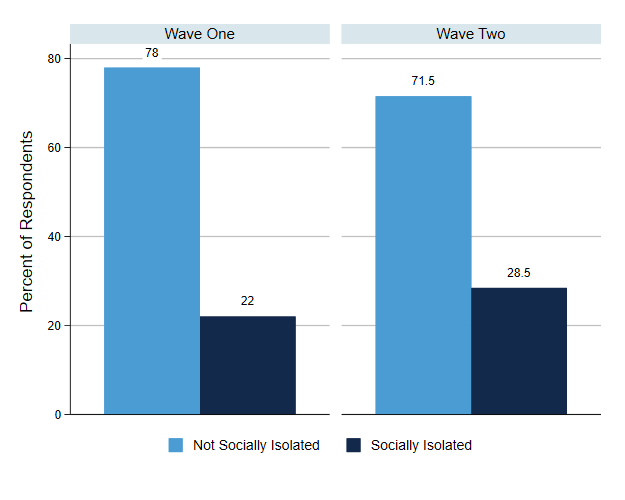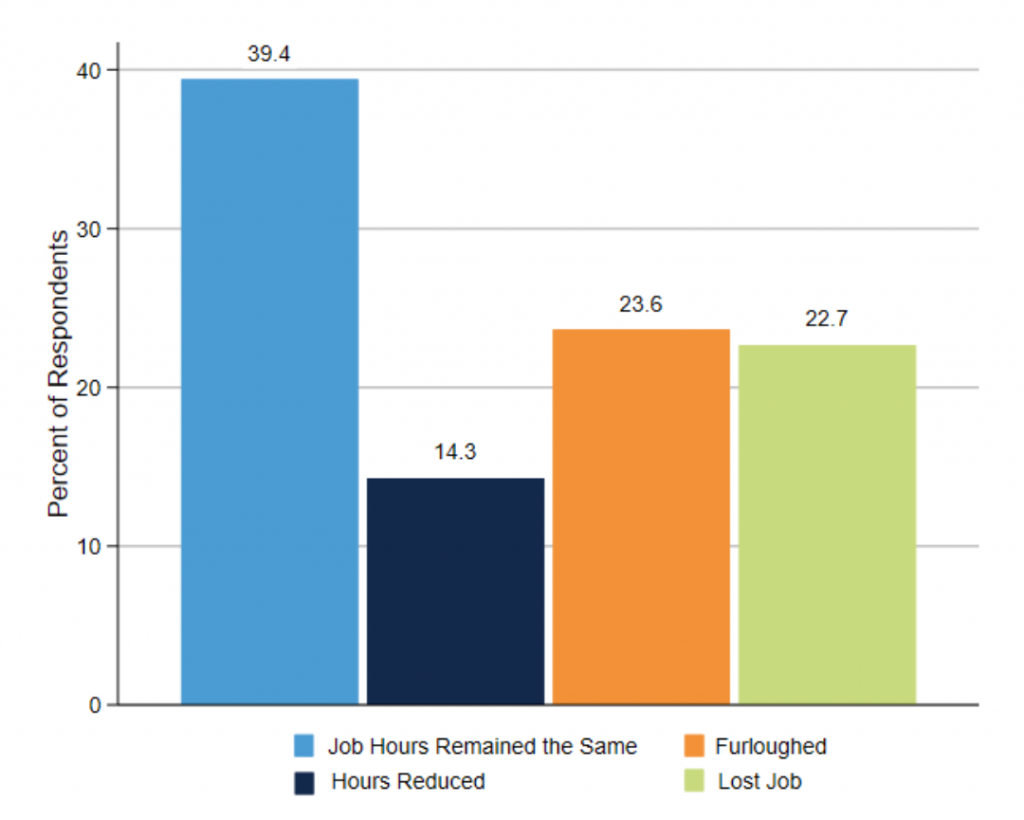COVID-19 Findings
Data Collection and Sample
- Wave I survey administered October 2019 to February 2020, prior to the first confirmed cases of Covid-19 in North Carolina.
- Wave I sample comprises 1,124 responses from first-year students aged 18 or older.
- Wave II survey administered June 2020 to July 2020, roughly 4 months into the nationwide Covid-19 pandemic.
- Wave II sample comprises 474 responses from a demographically representative subset of Wave I respondents.
Changes in Mental Health
Full report: The Impact of COVID-19 on First-Year UNC Students’ Mental Health: A Longitudinal Study
by Maria Emilia Mazzolenis
- Four months into the pandemic, three out of ten students had symptoms of depression (31.7%), compared to two out of ten students pre-pandemic (21.5%). This represents a 47.4% increase in depression in our sample.
- The number of students showing anxiety symptoms increased by 39.8% from pre-pandemic (18.1%) to four months into the pandemic (25.3%).
- Over half of the students experiencing symptoms 4 months into the pandemic were not getting help from mental health professionals either on campus or elsewhere; this marked an increase from pre-pandemic treatment rates
Social Isolation
Full Report: Social Isolation Among First-Year College Students During the COVID-19 Pandemic
by Mollie Pepper

- Perceived social isolation increased by 29% 4 months into the pandemic, from 22% to 28% of first-year students reporting moderate to high social isolation.
- Increases were larger for sexual or gender minorities, Asian/Pacific Islanders, non-first-generation college students
- Increases in social isolation were also strongly associated with increases in anxiety or depression symptoms
Material Hardship
Full Report: Material Hardships and Mental Health of College Students During the Covid-19 Pandemic
by Caroline Carpenter

- Among first-year students in our sample, 8.2% experienced material hardship and almost 10% experienced food insecurity since the start of the Covid-19 pandemic.
- Of students had a job prior to the pandemic, 39.4% had their hours remain the same, 14.3% had their hours reduced, 23.6% were furloughed, and 22.7% lost their job during the pandemic.
- Increases in anxiety and depression from pre-pandemic to 4 months into the pandemic were stronger for students who experienced material hardship, food insecurity and hour reductions of paid employment
Academic Difficulties
Full Report: Academic Difficulties of First-Year Students During the Covid-19 Pandemic
by Gabriela Goodman
- 60.2% of students reported difficulty adapting to distance learning
- 58.5% of students found it difficult to perform up to the academic standards that they maintained prior to the pandemic.
- 42.9% of students reported difficulty finding support for courses.
- First generation college students and sexual or gender minorities experienced particularly high rates of academic difficulties

